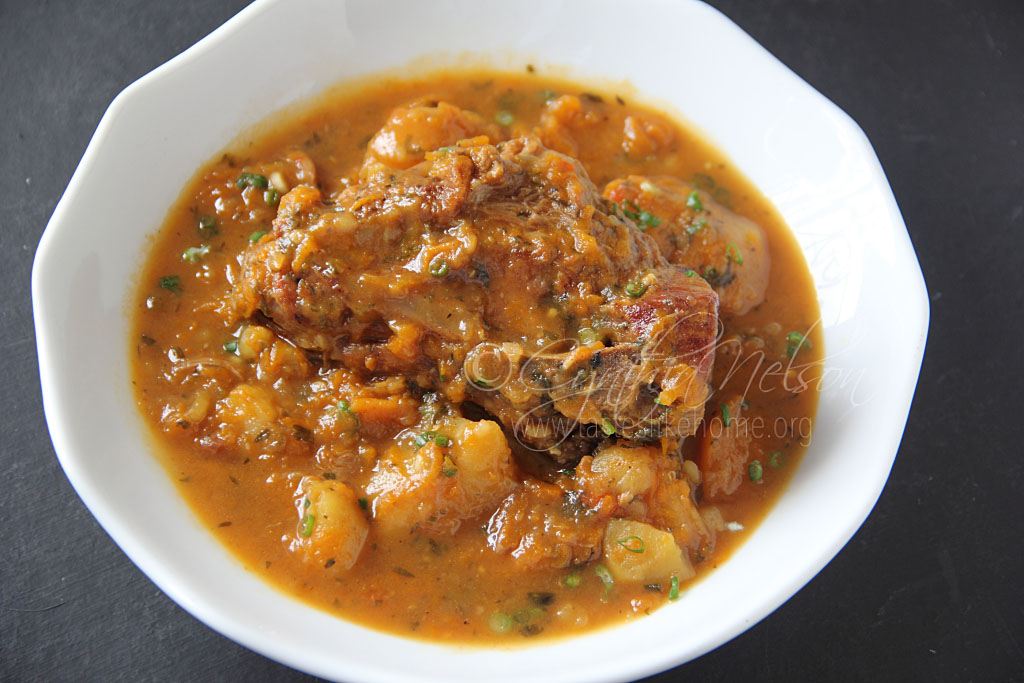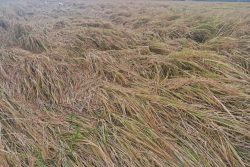 Pork, Potatoes and Pumpkin (PPP) when cooked together as a stew will have you going for extra helpings.
Pork, Potatoes and Pumpkin (PPP) when cooked together as a stew will have you going for extra helpings.
Making-do and using what you have, are recipes of creativity. You end up with combinations of ingredients, flavours, and textures that you won’t ordinarily consider. Sometimes, it’s not even the ingredients or combination thereof but the cooking style or technique involved that leads to the creation of new dishes. We are, understandably, prone to cooking what we know, and how we know to. However, that can (and does) get us stuck in a rut of what to cook and what to make with the same ingredients we regularly buy. There is also the saying that necessity is the mother of invention.
This PPP stew came about because I bought some country style ribs (the higher cut on the shoulder), which is one of my favourite cuts. It’s versatile, meaty, and can be cooked in different ways – baked, roasted, stewed, curried, even barbecued. The pumpkin was originally bought to make soup but I figured that it would add body to the stew, hence adding it to the pot. Potatoes were added because I had once had a curry made of pumpkin and potatoes at the home of a friend who follows a vegan diet and liked the combination. And so, my PPP stew came together.
The stew is light if you can imagine that. There was no browning or tomato based colouring added. I wanted the rich orange colour of the pumpkin to define the look of the stew. The cooked pumpkin, left pulpy, provided thickness. The potatoes were cut into large chunks, not halved or quartered as we tend to when making a curry. Cooked in the stew, they became creamy, offering a different type of softness to the stew. The seasoning of the stew by way of flavours (herbs and spices) was also restrained, letting the quality of the meat and flavour of the pumpkin come through. Onions cooked low and slow with a couple sprigs of fresh fine thyme added sweetness and the right amount of herbaceous-ness. The meat was seasoned with a dry all-purpose seasoning that contained salt.
Stews, like curries and various dishes, require things to be added to the pot in different stages of the cooking process, sometimes starting with the ingredient that takes the longest to cook, or the aromatics, spice or herb paste that needs time to break down and meld. It is a combination of building flavours and adding ingredients with time for them to cook through while allowing them to not completely disintegrate.
Here’s how I made this stew. Nevertheless, feel free to cook it the way that best suits you.
● The meat was seasoned and left for an hour to marinate before being added to a pressure cooker with heated oil to brown in batches. Once removed, the onions and thyme were added (you may need to add a little more oil). The heat was reduced to low and aromatics left to cook until soft and fragrant.
● With the heat raised to medium high, the meat and the juices from resting, were added back to the pot and tossed to mix before boiling water was added, coming halfway up the sides of the meat. Covered and brought to a pressure, it was cooked for 3 minutes before the heat was reduced to low and left to cook for 15 minutes.
● Pot removed from the heat, the pressure was released, lid removed, and the pot was returned to the heat (turned up to medium). The potatoes and pumpkin (cut into large chunks) were added to the pot and brought to a roaring boil. It was cooked on high heat for 5 minutes before the heat was lowered to medium-low to cook the potatoes and pumpkin with the pot covered partially (not closed/locked to pressure). Check for seasoning here (salt and pepper) and adjust.
● When cooked through, the pumpkin was roughly smashed with the back of a pot spoon before everything was gently stirred. The heat was raised to medium and cooked for another 5 minutes before being shut off and the stew left to rest for at least half an hour before serving.
● Just before serving, I mixed in some thinly sliced scallions/green onions.
What I found about this stew is that while it goes well with a nice plate of hot white rice or rice and peas, It works really well with thick-cut, toasted, crusty artisan-style bread. Serve it on the side as is or butter it and serve it on the side. Or, regardless of how you toast the bread, half the slices and arrange them at the bottom of a bowl then add the stew on top of the bread! Man on man, talk about some good eats! The bread soaks up the sauce and becomes a part of the stew. Of course the stew can be served with any boiled ground provision or breadfruit.
As with all stews and curries, this was even better the next day!
What are some combos you have cooked up recently or in the past that you can share?
Cynthia
cynthia@tasteslikehome.org








